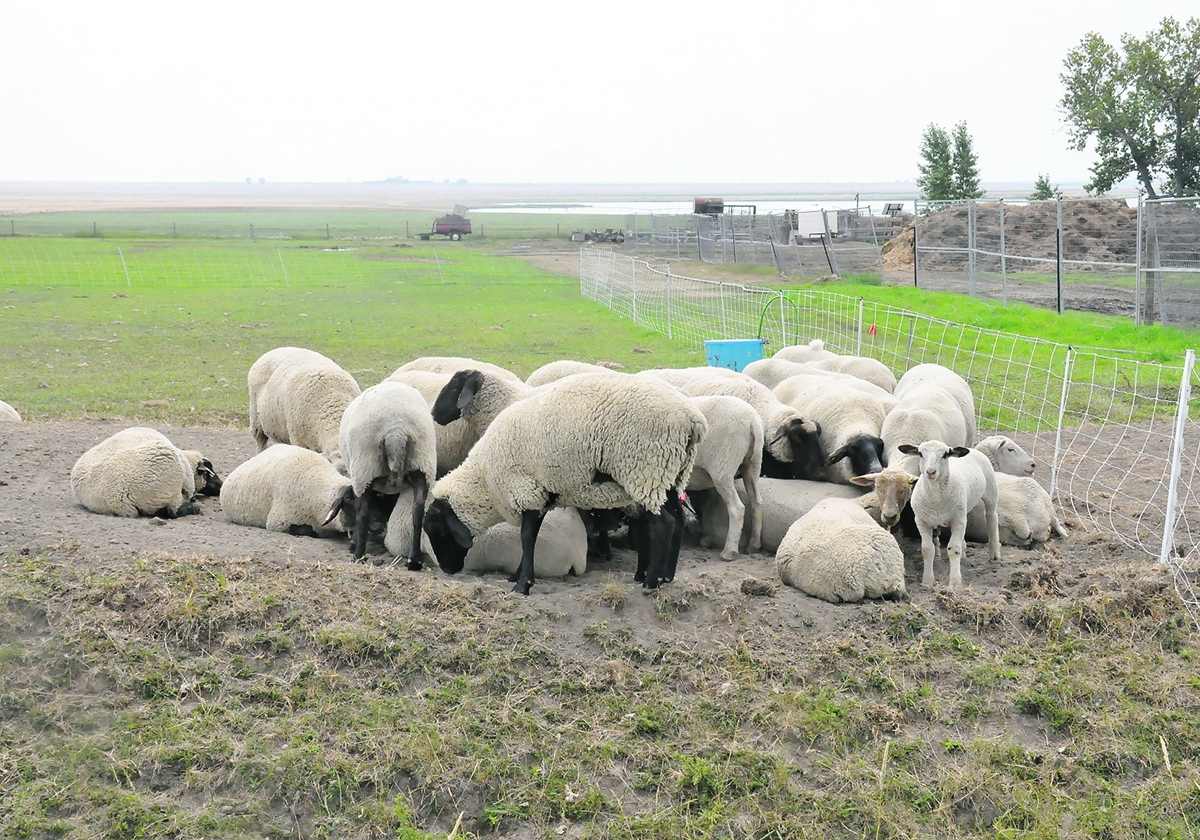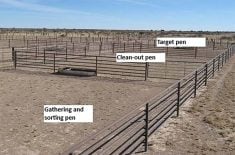In the past few weeks, Prairie Diagnostic Services in Saskatoon has had some confirmed cases of stillborn and aborted sheep fetuses diagnosed with Cache Valley Virus, a mosquito-borne disease.
The virus is widely distributed in mosquito populations throughout North America and in parts of Central America. It was first identified in 1956 in mosquitoes collected in Utah’s Cache Valley, which gives this virus its unique name.
It has been demonstrated in at least four Canadian provinces, 22 U.S. states and in Mexico. However, it took until 1987 for it to be identified as a cause of abortion in sheep with severe central nervous system and musculoskeletal system changes in aborted fetuses.
Read Also

Beef cattle more prone to trace mineral deficiencies
The trace mineral status of our cows and calves is a significant challenge for western Canadian producers and veterinarians.
In 1997, it was also recognized as a very rare cause of human disease.
The virus is only spread to mammals and humans through mosquitoes; there is no direct mammal-to-mammal spread. It was first identified in Canadian sheep in 2012 in malformed lambs in Ontario.
This virus is maintained in two host populations: an insect population (mosquitoes) and a reservoir vertebrate host that amplifies the infection.
These vertebrate hosts are primarily deer but also include small ruminants such as sheep and goats, as well as horses and cattle. Many other species of mammals have also tested positive.
Like many insect-borne viruses, the late summer and early autumn months are when the highest amount of virus is present in the mosquito population.
A 2014 serological study was carried out in Saskatchewan by a team led by Dr. Fabienne Uehlinger at the Western College of Veterinary Medicine and Dr. Wendy Wilkins at Saskatchewan Agriculture. Sixty-five per cent of sheep were positive and 94 per cent of flocks had at least one sheep positive for the virus. In addition, 20 per cent of cattle, 33 per cent of goats, 69 per cent of horses and 51 per cent of mule deer tested positive.
If a pregnant sheep or goat is infected with the virus by an infected mosquito during early gestation (first 48 days), it can result in early embryonic death, abortions or stillbirth in lambs or kids.
If the infection is in the first month of gestation, it may result in early embryonic death and the result is pregnancy rates that are much lower than usual in the flock.
Between 32 and 48 days of gestation, the virus can cause severe congenital abnormalities of the fetus, affecting both the nervous system and the musculoskeletal system. These lambs can be aborted or stillbirth and will often have various brain abnormalities, such as hydrocephalus and enlarged skulls, or severe musculoskeletal abnormalities, such as a twisted spinal column, fused joints and abnormal limbs (arthrogryposis) and underdeveloped muscles.
It appears that these adverse clinical syndromes are mainly seen in small ruminants such as sheep and goats. Adverse consequences of infection in horses or cattle have not been identified consistently.
Clinical symptoms are limited to the impacts on the fetus. The ewe will not have clinical disease and the virus in the bloodstream can only be detected for about two weeks after infection. The virus is also difficult to demonstrate in the aborted fetus, making diagnosis particularly challenging.
Unfortunately, it is difficult to prevent this viral cause of abortion because no vaccines for Cache Valley Virus infection are available.
The only potential way to prevent infection is to limit the exposure of pregnant sheep in the first 50 days of gestation to mosquitoes. Obviously, it is almost impossible to avoid mosquitoes in grazing animals such as sheep.
However, producers could perhaps alter the breeding schedule so that the sheep are not in the early pregnancy period during the high risk mosquito season.
The good news is that sheep that become infected will develop immunity and will be unlikely to abort in subsequent pregnancies due to this virus.
In some of the current outbreaks of Cache Valley Virus abortions, we think that the sheep were infected in late July or early August of last year.
At some point in the late summer or early fall, mosquito populations start to drop off and eventually we should see abortions due to this virus decline.
As well, because this is a very seasonal disease, it corresponds to the seasonality of the mosquito populations.
Producers who have an unusually high rate of abortions or stillbirth in their flocks should work with a veterinarian to submit aborted fetuses to the diagnostic laboratory to get an accurate diagnosis. There are many other causes of abortion in sheep and goats, and some of the other viruses can also cause malformed fetuses.
In Saskatchewan flocks, there is an initiative to provide free testing on abortion cases funded through Saskatchewan Agriculture and the vet college’s disease investigation unit. This is a time-limited program, and a local veterinarian can help submit those samples.
John Campbell is a professor in the department of Large Animal Clinical Sciences at the University of Saskatchewan’s Western College of Veterinary Medicine.















